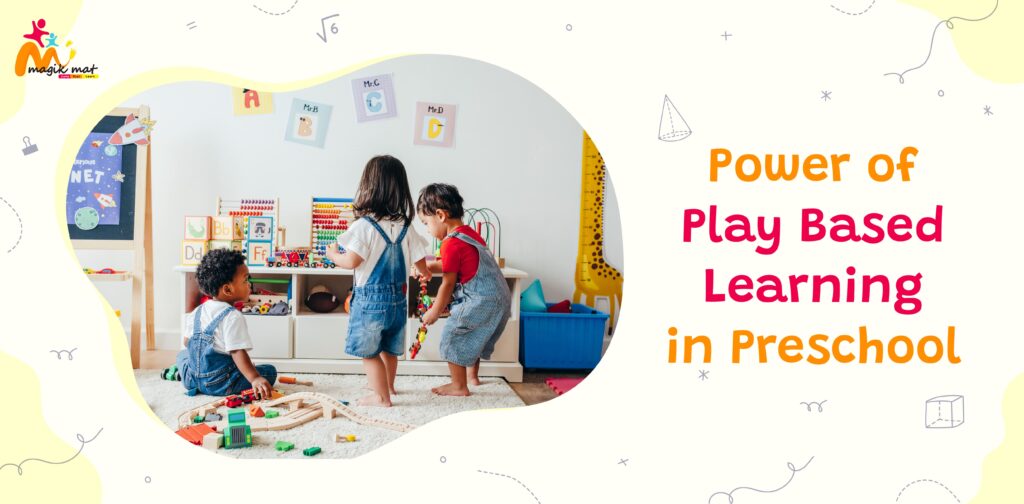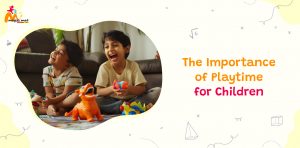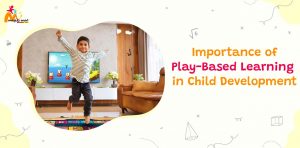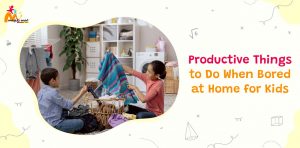Introduction
Do you know how to unlock boundless curiosity and creativity in preschoolers while keeping them engaged? The answer lies in the magical world of play-based learning. Learning through play benefits children a lot, as it helps them learn more effectively. When learning becomes a part of playing, children become more interested, motivated, and excited to learn. In this blog, let’s explore how play-based learning in preschool can be really effective. We’ll discover the power of play-based learning in preschool and how a child’s love of play and exploration may pave the way for a lifetime of learning and achievement.
What is Play Based Learning?
Play-based learning helps children interact with people, objects, and their surroundings in an active and imaginative way. A crucial part is symbolic representation, which is essential as children organize, construct, manipulate, pretend, explore, investigate, create, interact, imagine, and discuss while playing. It encourages the complete growth of a child (physical, social, emotional, cognitive, and creative) and can improve a wide range of literacy and numeracy skills depending on how it is used.
Why Play Based Learning is important for preschool kids?
Incorporating play-based learning is important for the holistic development of preschool children. Children explore, experiment, and acquire essential cognitive, social, emotional, and physical skills through play. It increases communication and cooperation among peers while improving creativity, problem-solving, and critical thinking skills. Play also helps to develop creativity, self-expression, and confidence, setting the groundwork for future academic achievement. Furthermore, it reduces tension, anxiety, and behavioral disorders, resulting in a more positive and joyful learning environment. Children acquire a lifetime love of learning in this participatory atmosphere, shaping their interest and flexibility, which are essential abilities for understanding the complexities of the world.
Ways to Implement a Play-Based Approach in Preschool
Incorporate Educational Products
Educational products are beneficial in promoting a play-based approach in preschool settings. Play-based learning is an approach that highlights the necessity of children engaging in purposeful play in order to boost their overall development. When educational products are carefully chosen and integrated into the learning environment, they can strengthen the play-based approach. Educational products like Magik Mat help in this process. It is the best educational product to teach children while playing.
Magik Mat offers numerous benefits for preschoolers. Here’s how it helps them:
- Engaging Learning: An interactive way to learn numbers and the alphabet, making it enjoyable
- Creativity Development: Encourages thinking outside the box and expressing ideas.
- Problem-Solving Skills: Game challenges improve critical thinking and analytical abilities.
- Tailored Learning: Diverse Games for Individual Preferences
- Math Skills: Builds a foundation in basic math concepts.
- Quiz games improve memory retention and general knowledge.
- Interactive learning enhances the overall learning experience.
- Customizable Difficulty: Children progress at their pace.
- Educational Value: An Effective Tool for Cognitive Development
- Holistic Development: Enhances cognitive, motor, and social skills
Create a Playful Environment
Make the preschool setting favorable for play. Arrange art corners, dramatic play areas, building blocks, sensory tables, etc., which help kids to beat boredom. Ensure that the environment is safe, well organized, and encourages exploration and imaginative play.
Allow for Free Play
Provide kids enough time for free play. They can choose activities based on their interests and start playing without adult assistance during this time. Free play promotes independence, the ability to make choices, and creativity.
Teach Concepts Through Play
Incorporate educational concepts into play activities. Use counting games while building blocks, teach colors through art projects, or explain science ideas with hands-on experiments.
Benefits of Play Based Learning
Creativity
Children can be creative and imaginative when they learn and play at the same time because they can come up with new ideas and explore them in a number of ways.
Spark the creative mind of a child by providing art supplies such as paint, sketches, and paper. Allow children to create anything based on their ideas. This will enable your child to do art projects, explore materials, and learn about colors. It is also one of the best ways to encourage kids’ imagination.
Language Development
One of the most significant advantages of play-based learning is that it promotes children’s literacy and language development. Children can learn new words and practice their language abilities through play-based activities. It also allows children to develop both oral and written means of communication while learning the meaning and structure of new words.
Provide notice boards with letters and drawings, or dolls with storytelling scenarios, for a learning activity in a play-based context. This allows kids to have fun while acting out stories, learning new vocabulary words, and improving their communication skills.
Cognitive Development
Children can explore and learn about their surroundings in play-based learning environments. As they explore and play, they can learn problem-solving abilities, critical thinking skills, and creativity.
For example, if you provide children with blocks to build towers, they can explore different shapes and sizes while figuring out how to fit them together during this game. They also learn about other concepts such as gravity and balance while having fun.
Social Development
Another advantage of play-based learning is that it allows children to engage with others while learning about social norms and standards and developing relationships with their classmates. Children learn to utilize their turns, share toys, and collaborate with others via play. They also learn how to resolve disputes, which is an important aspect of their social development as they reach preschool and later in life.
Conclusion
Adopting play-based learning is not only a positive step in schooling but also an essential responsibility we have to our children in order to give them a brighter and more promising future by developing their curiosity, creativity, and critical thinking skills from a young age. It develops a love of learning, develops important life skills, and prepares the next generation of curious, caring, and capable individuals.
Frequently Asked Questions
What is the powerful effect of play in a child’s education?
Play helps to develop skills like self-motivation and executive functioning. Memorization, flexible thinking, and self-regulation are all examples of executive functioning. These abilities are used by children to learn, solve problems, follow directions, and pay attention.
What is the best way to teach children?
A balanced approach that promotes active involvement, promotes curiosity, and adapts instruction to individual learning styles is the best method to teach children. Use interactive technologies, educational products, visual aids, and hands-on activities to maximize their potential and encourage critical thinking, creativity, and a happy learning atmosphere.
What skills are developed through play?
Children benefit from play in terms of their cognitive, physical, social, and emotional well-being. They also develop essential skills required for school, jobs, and relationships, such as confidence, interaction, curiosity, coping with challenging situations, etc.





